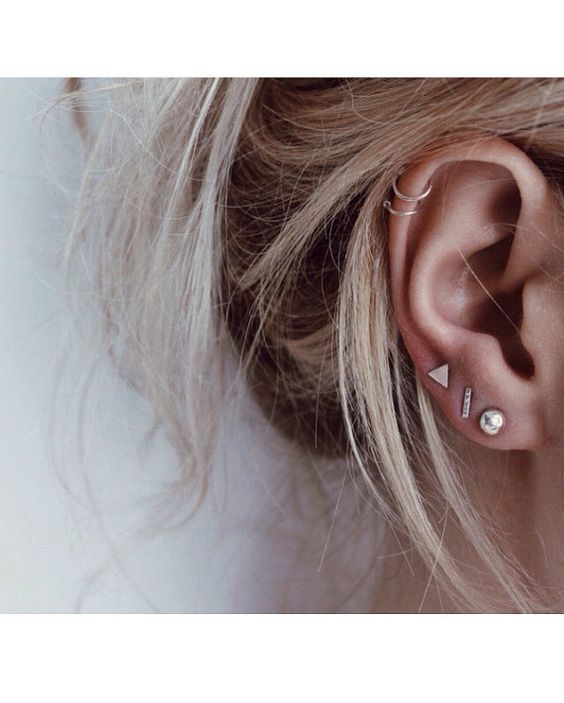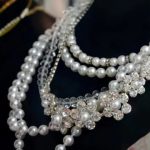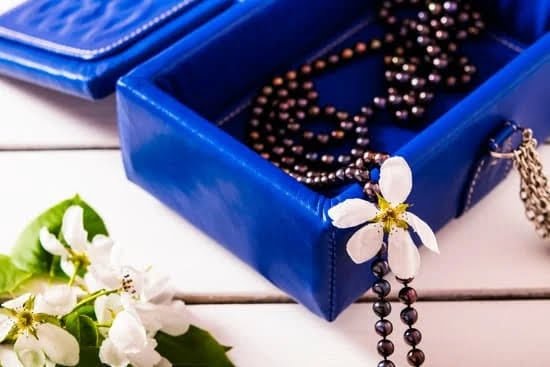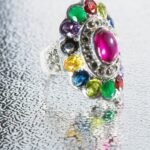Gold plated jewelry has become increasingly popular in the fashion industry, adorning the necks, wrists, and ears of trendsetters and style enthusiasts alike. However, there is a common misconception that gold-plated jewelry holds little to no value. In this article, we will explore whether gold plated jewelry is worth anything, uncovering its true worth beyond its monetary value.
As fashion trends evolve, so does our desire for affordable yet stylish accessories. Gold plated jewelry offers the perfect solution to this demand. It allows individuals to achieve the luxurious look of solid gold without breaking the bank. With an array of designs and styles available, gold plated jewelry caters to a variety of tastes and preferences.
Despite its growing popularity, a prevailing belief persists that gold plated jewelry lacks value. However, this notion couldn’t be further from the truth. Gold plating involves a layer of real gold being applied onto a base metal through electroplating or other processes. The thickness of this gold layer can vary, with higher-quality pieces boasting thicker layers that contribute to their durability and overall worth.
In the following sections of this article, we will delve deeper into what gold plated jewelry is and how it is made. We will also address the appeal of these accessories as cost-effective alternatives to solid gold pieces. By debunking the myths surrounding their worthlessness and exploring factors affecting their value, we hope to provide readers with a comprehensive understanding of just how valuable gold plated jewelry can truly be.
Understanding the Basics
Gold plated jewelry has become increasingly popular in the fashion industry due to its affordability and versatility. Before diving into the worth and value of gold plated jewelry, it is important to understand what exactly it is. Gold plated jewelry is made by using a layer of gold, which is applied onto a base metal such as brass or copper through a process called electroplating.
During the electroplating process, the base metal is immersed in a solution containing gold ions and an electric current is passed through it. This causes the gold ions to be attracted to the base metal, resulting in a thin layer of gold being deposited onto its surface. The thickness of this gold layer can vary but is typically around 0.5-2.5 microns.
While gold plated jewelry may not contain a significant amount of solid gold, it still offers the desired aesthetic look at a fraction of the cost. The use of a base metal instead of solid gold allows for more affordable pricing without compromising on style or design options. In fact, one of the major appeals of gold plated jewelry is that it provides individuals with access to fashionable pieces that mimic the look and feel of solid gold.
This section aims to educate readers about what exactly constitutes gold plated jewelry and how it is created through electroplating. By understanding this basic premise, readers will be able to appreciate why this type of jewelry offers an attractive alternative to solid gold while also considering its affordability and range of styles available.
The Appeal of Gold Plated Jewelry
Gold plated jewelry has gained significant popularity in recent years due to its allure of providing a luxurious look at an affordable price. One of the main appeals of gold plated jewelry is its affordability factor, making it an attractive alternative to solid gold for those on a budget. By using a base metal and adding a thin layer of gold plating, manufacturers are able to create pieces that mimic the appearance of solid gold without the hefty price tag.
The affordability of gold plated jewelry allows consumers to experiment with different styles and trends without breaking the bank. The range of styles available in gold plated jewelry is vast, allowing individuals to find pieces that suit their personal taste and fashion preferences. Whether it’s delicate necklaces, statement rings, or trendy earrings, there is something for everyone when it comes to gold plated jewelry.
In addition to affordability and versatility, another appeal of gold plated jewelry is its relatively long lifespan compared to other types of costume jewelry. The process of gold plating involves applying a layer of real gold onto the base metal surface through electroplating.
This layer acts as a protective coating, offering durability and resistance against tarnish or fading. With proper care and maintenance, gold plated jewelry can retain its shine and appearance for an extended period, making it worth considering as a long-term investment.
Overall, the appeal of gold plated jewelry lies in its ability to provide a high-end look at an accessible price point. While it may not hold the same intrinsic value as solid gold, its affordability factor combined with its versatility and durability make it an excellent choice for those looking to add some sparkle and style to their collection without breaking the bank.
Advantages of Gold Plated Jewelry
- Affordable: Gold plated jewelry provides a luxurious look at a fraction of the price compared to solid gold.
- Versatile: There is a wide range of styles available in gold plated jewelry, catering to various fashion preferences.
- Durable: The gold plating layer adds durability and protects the base metal from tarnishing or fading.
Disadvantages of Gold Plated Jewelry
- Not as valuable as solid gold: Despite its aesthetic appeal, gold plated jewelry does not hold the same inherent value as solid gold.
- Limited lifespan: The gold plating may wear off over time, requiring re-plating for continued use.
- May cause skin reactions: Some individuals may have sensitivities or allergies to certain base metals used in gold plated jewelry.
Despite these disadvantages, the affordability and overall appeal of gold plated jewelry make it a popular choice among fashion-conscious individuals. It is essential to consider personal preferences, budgetary constraints, and desired longevity when purchasing gold plated jewelry.
Debunking the Worthlessness Myth
Gold plated jewelry is often dismissed as having no value, with many people assuming that it is simply a cheap alternative to solid gold. However, this misconception couldn’t be further from the truth. In fact, gold plated jewelry holds actual value and offers several advantages that make it a worthwhile investment.
Firstly, it is important to understand the process and composition of gold plated jewelry. Gold plated jewelry typically consists of a base metal, such as copper or silver, which is then coated with a thin layer of gold through electroplating. The thickness of this gold layer can vary, but the standard requirement for an item to be considered “gold plated” is for it to have at least 0.5 microns (or 20 millionths of an inch) of gold plating.
The presence of this layer of gold not only gives gold plated jewelry its luxurious appearance but also enhances its durability and longevity. While solid gold jewelry may be susceptible to scratching and tarnishing over time, the gold plating on these pieces acts as a protective barrier against wear and tear. This means that with proper care, your gold plated jewelry can last for many years without losing its luster.
To highlight the actual value of gold plated jewelry, one must consider its affordability compared to solid gold pieces. Solid gold jewelry is undoubtedly more expensive due to the higher cost of raw materials. On the other hand, gold plated jewelry offers a more accessible price point while still providing a similar aesthetic appeal. It allows individuals to enjoy the look and feel of fine jewelry without breaking the bank.
| Advantages | Gold Plated Jewelry | Solid Gold Jewelry |
|---|---|---|
| Affordability | Lower price point | Higher price point |
| Durability | Protective gold layer | Vulnerable to scratching and tarnishing |
| Range of Styles | Versatile options available | Varied options available |
Understanding Valuation
Quality of the Base Metal
One of the key determinants influencing the worth of gold plated jewelry is the quality of the base metal used. The base metal serves as the foundation for the gold plating process and can significantly impact how well the gold layer adheres to the jewelry piece.
Higher quality base metals, such as sterling silver or stainless steel, provide better durability and longevity for the gold plated jewelry. These metals not only enhance the overall value of the piece but also help prevent tarnishing and discoloration over time.
It is important for consumers to consider the base metal when purchasing gold plated jewelry. Researching reputable brands or checking for certifications can ensure that higher quality materials were used in crafting the piece. It is also advisable to read customer reviews to gauge experiences with a particular brand’s use of high-quality base metals.
Gold Thickness
Another significant factor affecting the worth of gold plated jewelry is the thickness of its gold layer. The thickness determines both its appearance and durability. Generally, a thicker layer indicates higher quality and will last longer without fading or rubbing off.
When purchasing gold plated jewelry, it is essential to inquire about or research the typical thickness used by a brand or manufacturer. A thicker gold layer would add more value to a piece by enhancing its overall aesthetics and ensuring it maintains its color and shine over time.
Overall Craftsmanship
The craftsmanship involved in producing gold plated jewelry also plays a crucial role in determining its worth. High-quality craftsmanship ensures that all components, including clasps, chains, settings, and decorative elements, are expertly crafted and securely attached to create a well-made piece.
When evaluating potential purchases, consumers should carefully examine pieces for any signs of poor workmanship such as loose fittings or uneven plating. Investing in well-crafted jewelry will not only increase its monetary value but also contribute to its longevity and overall appeal.
By considering the quality of the base metal, gold thickness, and overall craftsmanship, individuals can evaluate the worth of gold plated jewelry before making a purchase. Understanding these factors will allow buyers to make informed decisions and acquire pieces that possess both monetary and aesthetic value.
Market Demand and Resale Potential
Market Demand for Gold Plated Jewelry
Gold plated jewelry has gained significant popularity in recent years, thanks to its affordability and versatility. The market demand for gold plated jewelry is consistently increasing due to its ability to offer consumers the look of luxury at a fraction of the cost. Many fashion-forward individuals are drawn to gold plated jewelry because it allows them to keep up with the latest trends without breaking the bank.
In addition, gold plated jewelry appeals to a wide range of consumers who may be hesitant to invest in solid gold pieces. Those who prefer variety and like to switch up their accessories frequently find gold plated jewelry an attractive option. With a plethora of styles available, from classic designs to trendy pieces, there is something for everyone when it comes to gold plated jewelry.
Resale Potential of Gold Plated Jewelry
Contrary to popular belief, gold plated jewelry does hold some resale potential. While its value may not match that of solid gold, there is still a market for pre-owned gold plated pieces. Independent resellers that specialize in vintage or designer accessories often accept gold plated jewelry for resale. Online platforms such as eBay or Poshmark provide opportunities for individuals looking to sell their unwanted or outgrown gold plated items.
Consignment stores are also viable options for those interested in selling their gold plated jewelry. These stores typically curate a collection of fashionable and high-quality items, including both brand new and gently used accessories. By consigning your gold plated jewelry with these stores, you can reach a broader range of buyers and potentially earn some money back on your initial investment.
However, it is important to note that when selling gold plated jewelry, one should have realistic expectations regarding pricing and potential profit. It is always advisable to research current market prices and consult with reputable jewelers or appraisers who can provide accurate assessments of your items’ worth.
Ultimately, while the resale value may not match that of other precious metals or gemstones, gold plated jewelry still has the potential to find a new owner and generate some financial return. Therefore, if you have gold plated jewelry that you no longer wear or enjoy, it is worth exploring the options available for selling it and potentially recouping some of its value.
Caring for Gold Plated Jewelry
Gold plated jewelry, despite its affordable price tag, can still hold value if properly cared for. To ensure that your gold plated pieces retain their luster and longevity, it’s crucial to provide the right care and maintenance. In this section, we will outline essential tips on how to properly care for gold plated jewelry.
Firstly, it is important to note that gold plated jewelry should be handled with care to prevent damage. When wearing your gold plated pieces, avoid exposing them to harsh chemicals such as perfumes, lotions, or cleaning solutions. These substances can cause the gold plating to wear off prematurely. Additionally, remove your gold plated jewelry before participating in activities that may lead to scratches or abrasions.
Cleaning gold plated jewelry requires a gentle touch. Avoid using abrasive materials or harsh cleaning agents that can strip away the delicate gold layer. Instead, opt for mild soap and warm water along with a soft cloth or brush specifically designed for jewelry cleaning. Gently cleanse the piece by lightly rubbing it in a circular motion, then rinse thoroughly and pat dry with a clean towel.
Storing your gold plated jewelry properly is equally important in maintaining its value and longevity. When not in use, store each piece individually in a soft cloth or velvet pouch to minimize contact with other pieces of jewelry that could potentially scratch the surface. It’s also essential to store your gold plated jewelry in a cool and dry place away from direct sunlight or excessive moisture.
By following these simple caring tips, you can ensure that your gold plated jewelry retains its shine and durability over time while preserving its value. Remember that taking precautions during everyday wear along with regular cleaning and proper storage will significantly extend the lifespan of your precious pieces.
Making an Informed Purchase
When it comes to buying gold plated jewelry, making an informed purchase is crucial to ensure that you are getting a quality piece. While gold plated jewelry may not have the same value as solid gold, there are still factors to consider when purchasing these items. By following some simple guidelines, you can identify high-quality gold plated jewelry and make a purchase that you will be happy with.
One important aspect to consider when buying gold plated jewelry is the base metal used. Gold plating is typically done over a base metal such as brass or silver. The quality of this base metal will affect the overall durability and longevity of the jewelry. It is important to choose a base metal that is resistant to tarnishing and corrosion.
Another factor to consider is the thickness of the gold layer involved in the plating process. The thickness of the gold layer can vary significantly from one piece to another, and this will impact both the appearance and durability of the jewelry. A thicker gold layer will generally result in a more lustrous and long-lasting piece.
Researching reputable brands and checking for certifications is also important when purchasing gold plated jewelry. Established brands often have stricter quality control measures in place, ensuring that their products meet certain standards. Look for certifications like “gold-filled” or “vermeil” which indicate higher quality plating processes.
Reading customer reviews can also provide valuable insights into the quality and durability of specific pieces or brands. Customers who have purchased and worn the jewelry can offer feedback on its longevity, appearance, and overall satisfaction.
| Factors | Affects |
|---|---|
| Base metal used | Durability and longevity of the jewelry |
| Thickness of gold layer | Appearance and durability of the jewelry |
| Brand reputation and certifications | Quality control measures, standards met by the product |
| Customer reviews | Insights into the quality, appearance, and satisfaction of the jewelry piece or brand |
Conclusion
After exploring the various aspects of gold plated jewelry, it is evident that this type of jewelry holds value beyond its monetary worth. While it may not possess the same investment potential as solid gold, gold plated jewelry offers an affordable and versatile option for fashion enthusiasts. It allows individuals to enjoy the look and feel of wearing gold without breaking the bank.
One of the key takeaways from this article is understanding that gold plated jewelry can hold sentimental value for many people. Whether it’s a cherished gift from a loved one or a piece that represents a special occasion, these pieces can become meaningful keepsakes. The emotional significance they hold often outweighs their financial value, making them priceless in their own right.
Additionally, gold plated jewelry provides an opportunity for self-expression through fashion. With a wide range of styles and designs available, individuals can find pieces that suit their unique tastes and preferences. Gold plating also enhances the durability and longevity of the base metal, ensuring that these pieces can be enjoyed for years to come.
In conclusion, while there may be misconceptions surrounding the worth of gold plated jewelry, it cannot be dismissed as worthless. Its affordability, versatility, sentimental value, and fashion appeal all contribute to its overall worth.
Whether buying or selling gold plated jewelry, understanding its value goes beyond just its price tag – it encompasses emotional attachment and personal style choices. So next time you come across a beautiful piece of gold plated jewelry that captures your attention, remember that its worth extends far beyond its monetary value alone.
Frequently Asked Questions
What is the average cost of gold plated jewelry?
The average cost of gold plated jewelry can vary depending on various factors such as the quality of the base metal used, the thickness of the gold plating, and the brand or design of the jewelry/” target=”_blank” rel=”follow noopener”>jewelry piece. Generally, gold plated jewelry is more affordable compared to solid gold jewelry because it consists of a base metal that is coated with a thin layer of gold.
The price range for gold plated jewelry can be quite wide, but on average, you can find pieces ranging from $20 to $200 or more.
How much is 18K gold plated worth?
The worth of 18K gold plated jewelry is primarily determined by the base metal used and its market value since the gold plating itself only contains a small fraction of actual gold. In general, 18K gold plating means that there is a layer of 18 karat gold deposited onto the surface of another metal.
While this type of plating provides a higher percentage of gold compared to lower karat options like 14K or 10K, it still has significantly less value compared to solid 18 karat gold due to its minimal quantity of pure gold content. Therefore, the worth or price range for 18K gold plated jewelry would depend on factors such as the design, brand, craftsmanship, and current market demand.
Is gold plated jewelry considered fake?
Gold plated jewelry is not considered fake in terms of its composition and manufacturing process. Although it doesn’t consist entirely of real solid gold throughout like solid gold jewelry does, it still contains genuine layers of gold coating on top of another metal base.
Genuine manufacturing techniques are employed to ensure that a layer or layers (depending on thickness) of real gold are bonded onto the surface using various methods like electroplating or mechanical bonding. However, it’s important to note that even though these pieces have some genuine elements due to their coating, they are significantly less valuable than their solid counterparts and may tarnish or wear off over time depending on their quality and usage.

Welcome to my jewelry blog! My name is Sarah and I am the owner of this blog.
I love making jewelry and sharing my creations with others.
So whether you’re someone who loves wearing jewelry yourself or simply enjoys learning about it, be sure to check out my blog for insightful posts on everything related to this exciting topic!





